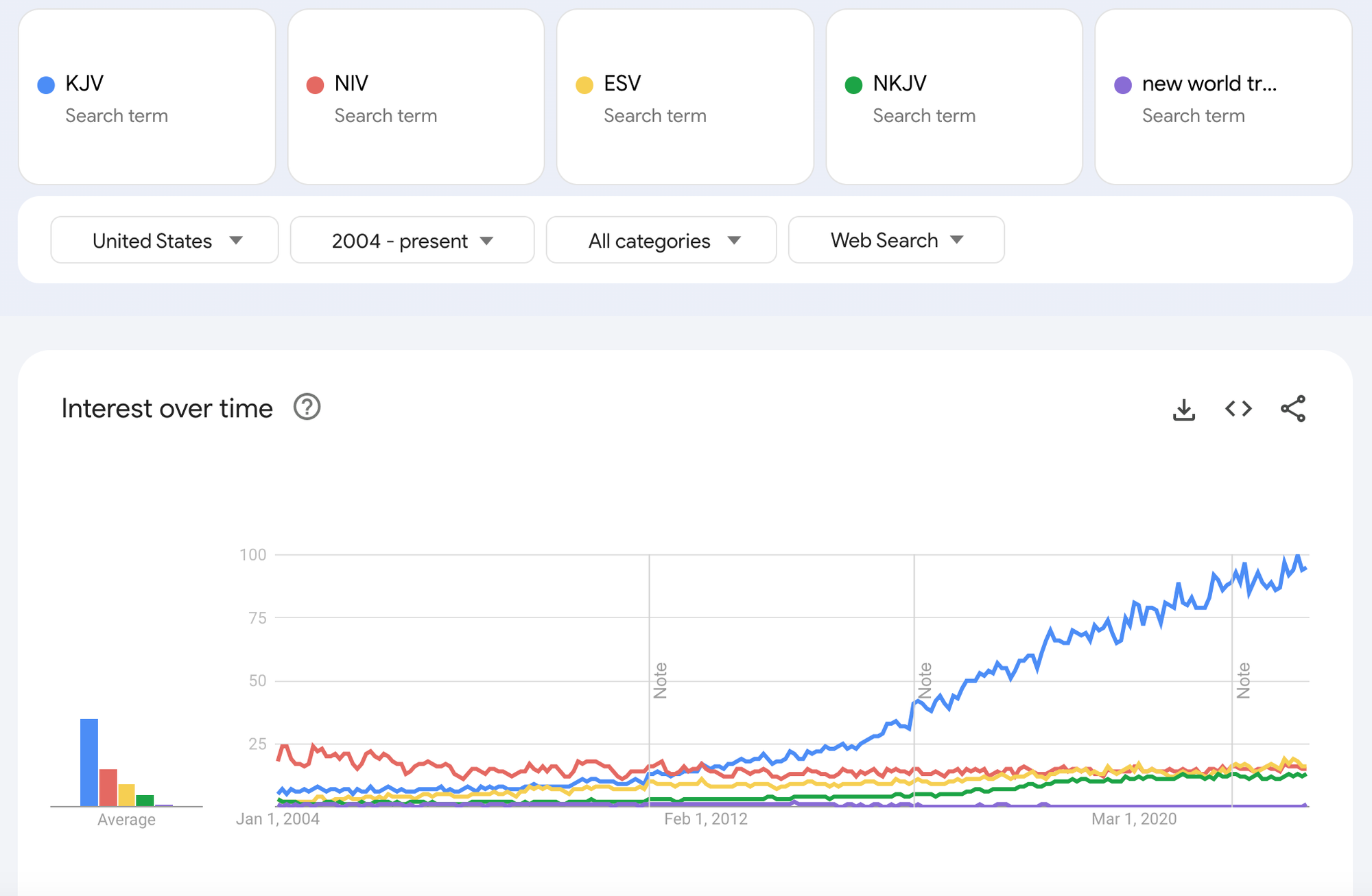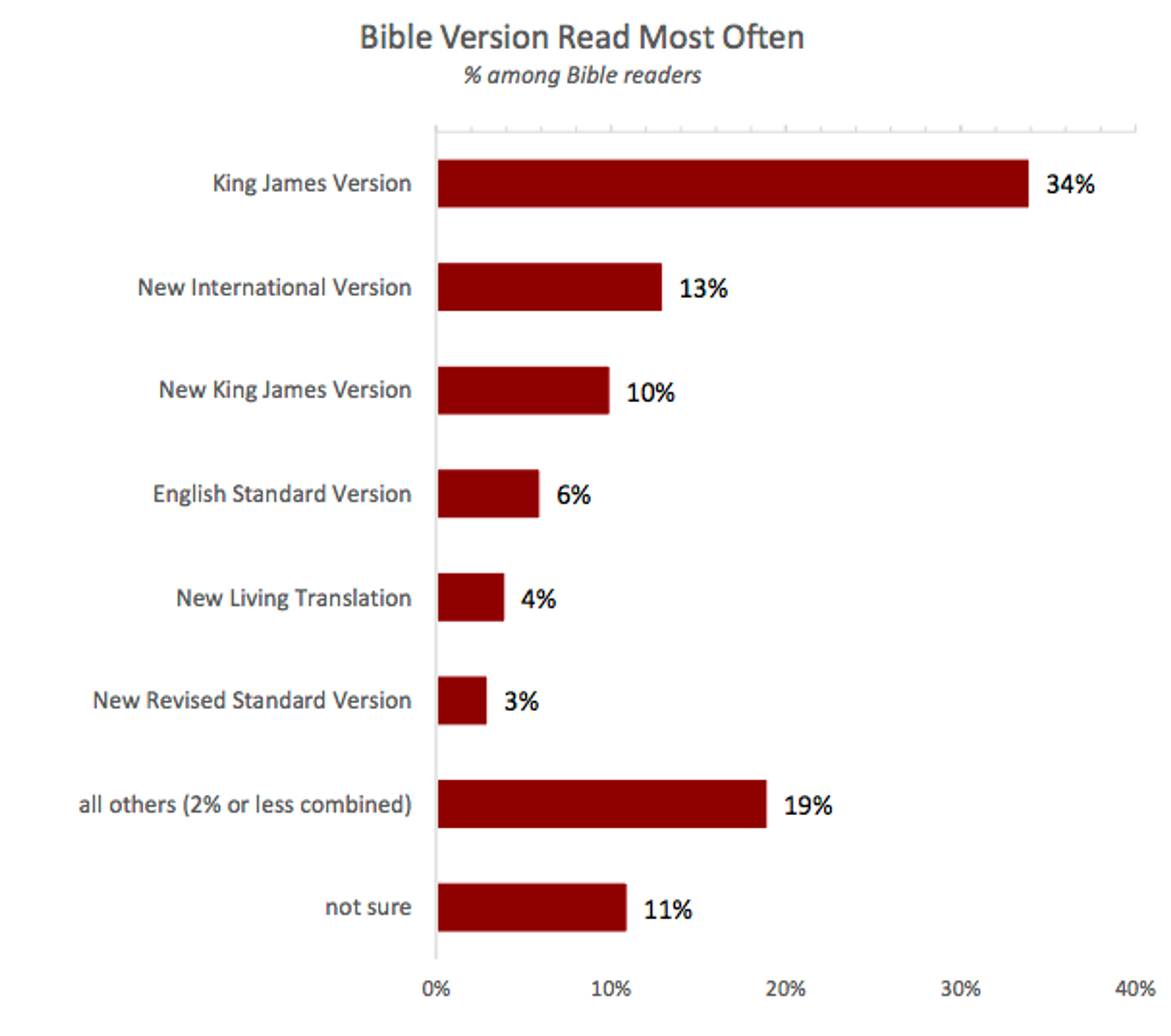The History and Popularity of English Bible Translations
There was a time when no one could read the Bible in their own language. Now, Wycliffe Global Alliance statistics show that most of the world’s population has a complete Bible available in their native language. The English-speaking world can choose from dozens of translations. With so many out there, it makes me wonder: which ones do people choose?
There are several ways to answer this with data at varying levels of availability and reliability. The most accessible data comes from Wikipedia. Statistics from any online source will be skewed toward younger portions of the population, hampering the accuracy but useful all the same. The visualization below shows Bible translations through time using this list of English Bible translations and view statistics for each detail page.
The rise in the number of translations each decade since the 1950s is interesting. With each new version comes increased difficulty for one to stand out in the crowd. Those that have risen above the rest are the Wycliffe Bible, the King James Version (or Authorized Version), and the New International Version. The English Standard Version also deserves mention due to its rapid climb in popularity since its first publication in 2001.
John Wycliffe is famous for bringing the Bible to laypeople, an action which paved the way for the Protestant Reformation. Therefore, it remains a prominent interest when studying the history of the Bible. The King James Version stands out not only for its history and literary achievement but also for its continued popularity. We should expect that modern readers would gravitate to a version like the NIV with more familiar language, yet the KJV stays high up the charts while its language is from a bygone era.
It’s also important to explore how well this holds up compared to other data sources. One widely accessible source is Google Trends. The chart below examines search rankings for the five most popular versions.

Overall, the rankings match reasonably well with Wikipedia page views, with some interesting exceptions. As of 2015, the NIV was beating the KJV on a decade-long average. They have switched places since 2012 and the KJV continues to gain steam. The ESV continues climbing slowly and steadily. Other differences are likely accounted for in the methods used to track statistics and the time frame differences (90-day Wikipedia views vs. month-to-month search trends).
This only accounts for internet users at large who express some interest in each version through a page click or search term. It says nothing about what people actually buy or read on a regular basis. Bible websites and apps like YouVersion would have data on readership but would still be limited to tech-friendly demographics.
A better source would be the Barna Group, an organization which conducts scientific studies of religious interest. In a 2014 study commissioned by the American Bible Society, they found the same overall rankings for the top four versions based on survey responses. In this case, not only did the King James Version come out on top, it did so by a wide margin.

So, which English bible version is most popular? With three ways to answer that question, the King James Version is at or near the top of every list. Finding which one belongs in second, third, or fourth place will depend on where and when you look for data.
I gravitate towards sources which are easily accessible like Wikipedia. As we’ve seen, an easy answer won’t always be the right answer, but at least it’s something. Data concerning translation work worldwide is much harder to compile and analyze.
As the mission spreads throughout the globe, aided by the continued advancements in technology, I hope to see data that shows fewer and fewer people groups and languages without access to the scriptures.
